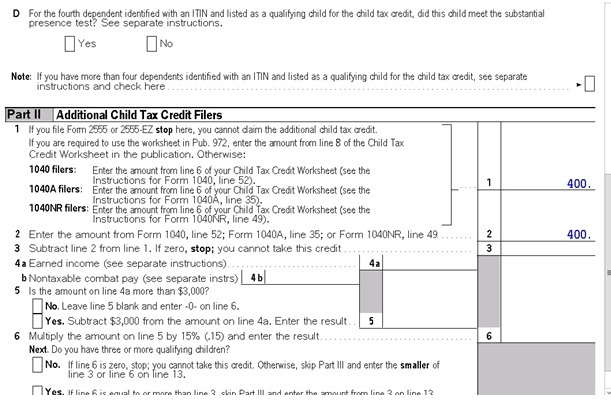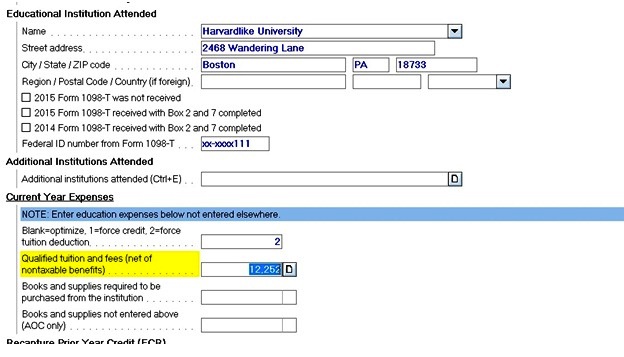Overview:
IRS offers every
taxpayer the option to itemize their deductions or to claim the standard
deduction. Standard deduction amount varies depending on your filing status.
However, if you have significant deductible expenses during the year, the total
of which is greater than your standard deduction, you can itemize by reporting
the expenses on Schedule A. Itemized Deductions will help you to reduce federal
tax liability if it is more than Standard Deduction.
Generally speaking, individuals on higher tax brackets have more to gain
from itemizing their deductions. For example, many people list interest on a
mortgage payment as a large deductible in the “interest you paid” section.
Obviously, a wealthier home owner will have paid more interest on their home
than a poorer one.
Purpose Of
Schedule A
Like the standard tax returns, itemized deductions are
subtracted from the adjusted
gross income (AGI) to arrive at an
individual's taxable income. Schedule A is required in any year you choose to
itemize your deductions.
The schedule has seven categories of expenses:
1. Medical and dental
expenses.
2. Taxes.
3. Interest.
4. Gifts to charity.
5. Casualty and theft
losses.
6. Job expenses and
certain miscellaneous.
7. Other Miscellaneous
Deductions.
Each of these categories has different requirements and
limitations on the amount you can deduct.
Taxpayer can claim those deductions which he/she is eligible
to claim and no need to complete each section as one single section may be
enough to be more than standard deduction. You can notice the table of Standard
Deductions according to your filing status on left side top corner of Form
1040, page 2.
Example
1
– For tax year 2015, $6,300 is the eligible amount of Standard deduction for
those who file their filing status as ‘Single’. If you have spent $2,000 for
charity and $2,000 for mortgage interest, your total itemized deductions will
be $4,000 which is less than $6,300 of standard deduction amount. So, opting
for higher deduction (i.e., standard deduction of $6,300 is beneficial)
Note: The mortgage
interest deduction alone can be quite significant and by itself be greater than
the standard deduction.
After all calculations, if itemized deductions are more than
standard deductions, the total deduction should be transferred to line 40 of Form
1040.
Part I:
Medical and Dental Expenses (Pub 502)
This deduction will be claimed usually if unreimbursed
medical and dental expenses are more. Both of the below conditions should be
met in order to deduct your medical and dental expenses:
a. If you itemize
deductions on Schedule A.
b. If your expenses are
more than 10% of your AGI or 7.5% of your AGI for taxpayers 65 years or older.
If a question arises as what all a taxpayer can deduct?
Answer is as below:
Any medical condition which includes the cost of following:
·
Mitigation.
·
Cure.
·
Diagnosis.
·
Treatment.
·
Prevention.
·
Items needed for above purposes, including
ü
Equipment
ü
Supplies.
ü
Diagnostic Devices.
These are some of the expenses that you can deduct under medical and dental section:
Ø Cost of medical care
from any of these practitioners
o
Acupuncturists
o
Chiropractors
o
Dentists
o
Eye doctors
o
Medical doctors
o
Occupational therapists
o
Osteopathic doctors
o
Physical therapists
o
Podiatrists
o
Psychiatrists
o
Psychoanalysts giving medical care
o
Psychologists
o
Other qualified medical
practitioners
Ø
Transportation costs to and from
medical care. If you drive your own car, the deduction is 23 cents per
mile in 2015. (Medical miles deduction)
Ø
Prescription medicines
Ø
Amounts you paid for qualified
long-term care services
Ø
Limited amounts you paid for any
qualified long-term care insurance contracts
Ø
Medical insurance premium -- You
can't deduct pre-tax salary contributions you make to an employer-sponsored
health insurance plan.
Ø
Amounts you pay if not covered
by Social Security for:
o
Medicare B supplemental insurance
o
Medicare D insurance
o
Medicare A premiums
You usually can't deduct premiums
you pay for certain types of policies. This is true of policies with benefits
that aren't tied to the actual cost of the medical care you received. These
policies:
Ø
Pay you a certain amount (Ex: policy
that pays you $200 a day while hospitalized)
Ø
Pay you for lost earnings
Ø
Pay a flat amount for the loss of a
limb or eyesight
The required contributions you make
to state disability-benefit funds might not be medical expenses limited by the
10% rule -- 7.5% if 65 or older. This is true if you contribute to:
Ø
Alaska Unemployment Compensation
Fund
Ø
California Paid Family Leave Program
Ø
California Non occupational
Disability Benefit Fund
Ø
New Jersey Non occupational
Disability Benefit Fund
Ø
New Jersey Unemployment Compensation
Fund
Ø
New York Non occupational Disability
Benefit Fund
Ø
Pennsylvania Unemployment
Compensation Fund
Ø
Rhode Island Temporary Disability
Benefit Fund
Ø
Washington State Supplemental
Workmen’s Compensation Fund
Instead, include these payments as a part of your state tax
deductions on Schedule A.
These are some of the expenses that you cannot deduct under medical and dental section:
Ø
Cosmetic surgery not related to any
of these:
o
Congenital abnormality
o
Accident
o
Disease
Ø
Medicare tax on wages and tips paid
as part of the self-employment tax or household employment taxes
Ø
Nursing care for a healthy baby
Ø
Usually, drugs not approved by the
FDA
Ø
Funeral, burial, or cremation costs.
Source Document: Generally amounts
spent on medical and dental will be provided by taxpayer himself.
Input:
Print Preview in lacerte tax software:










